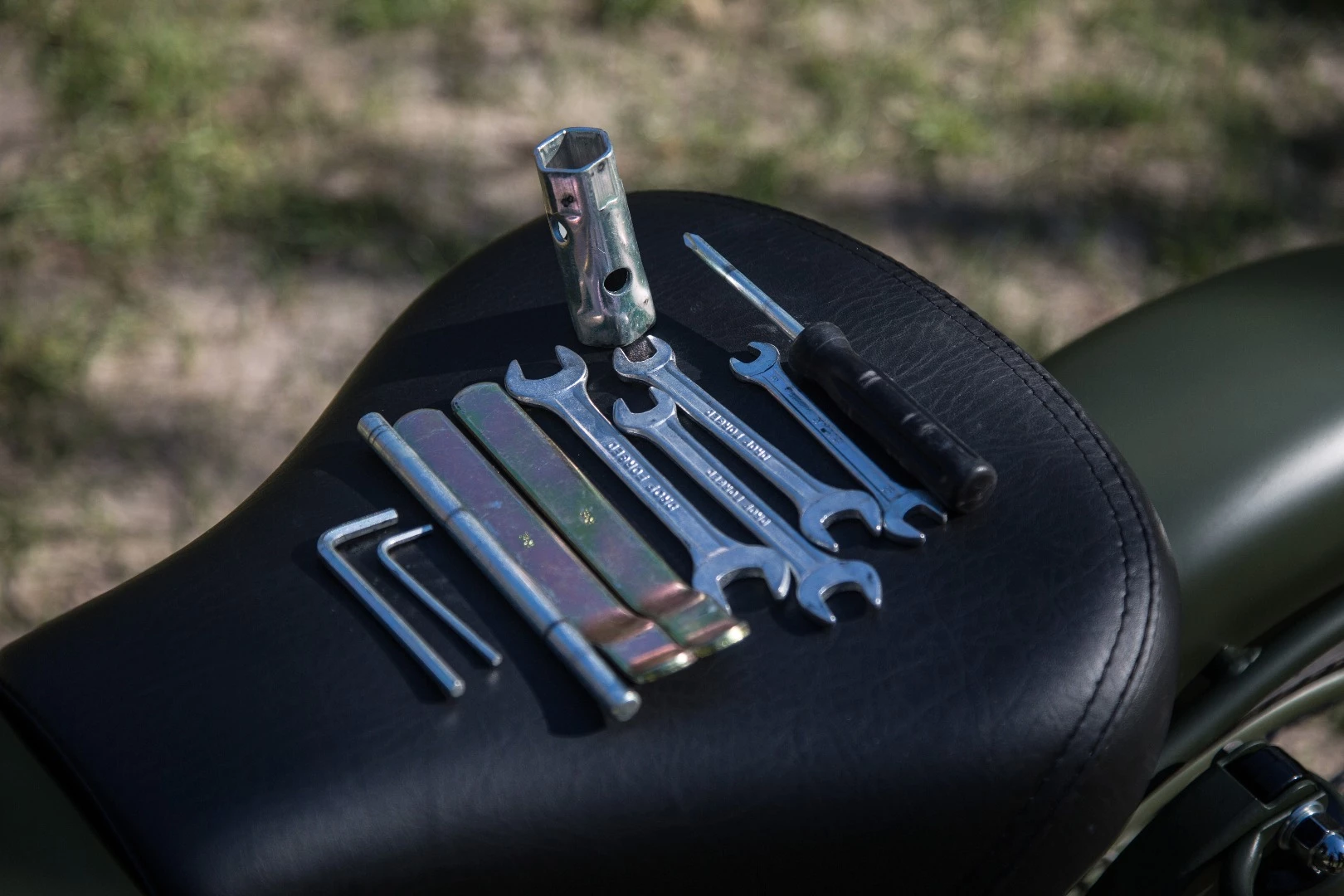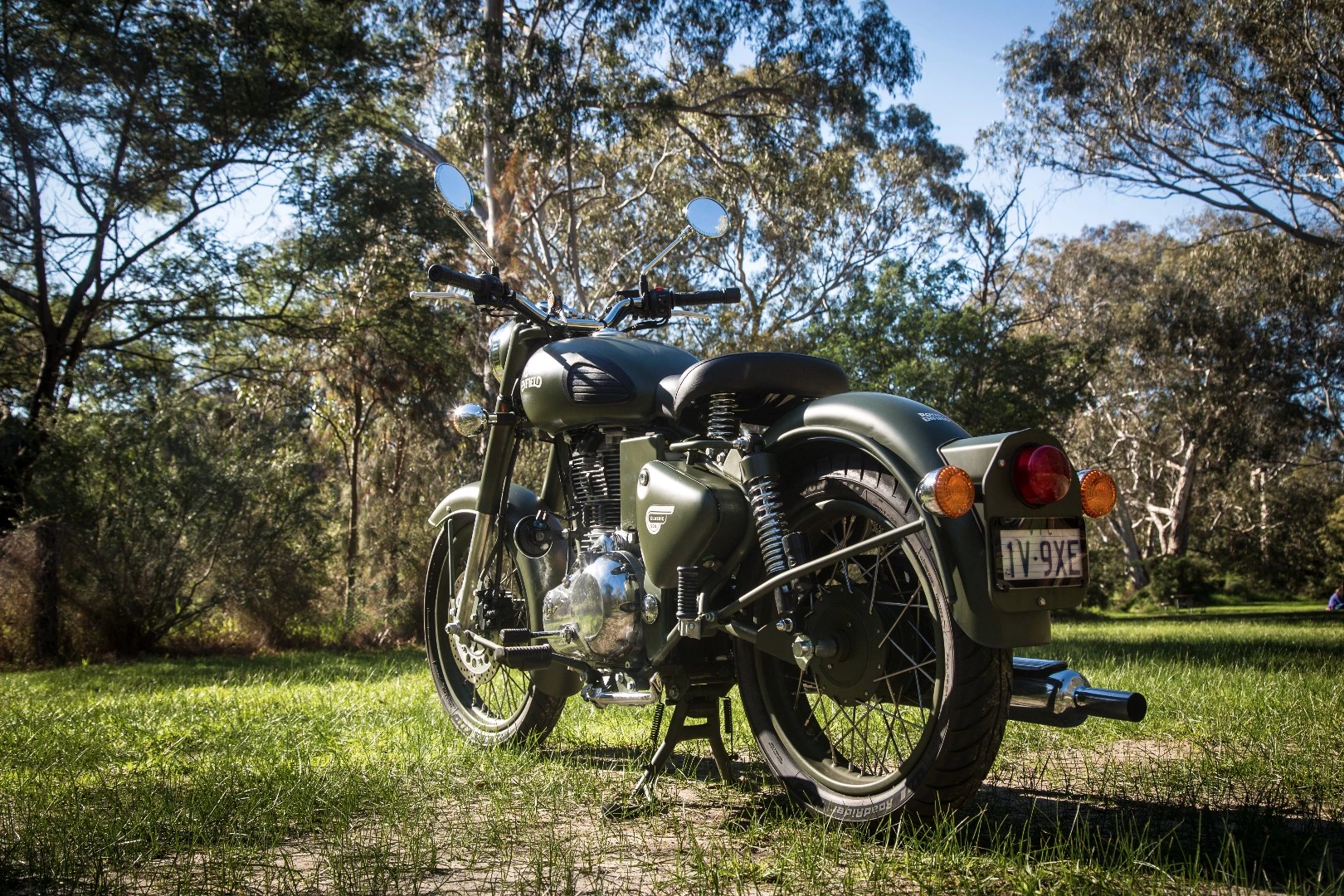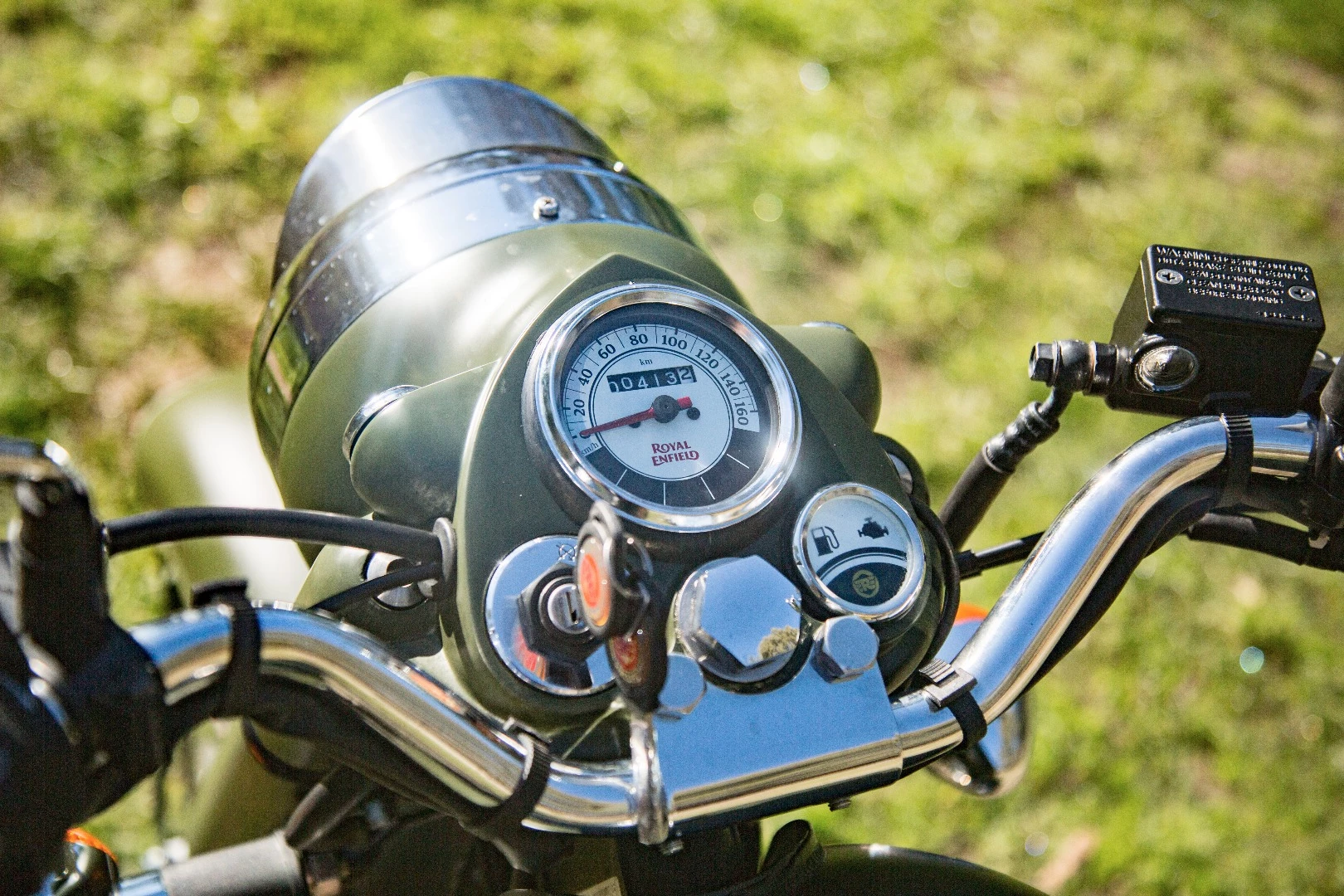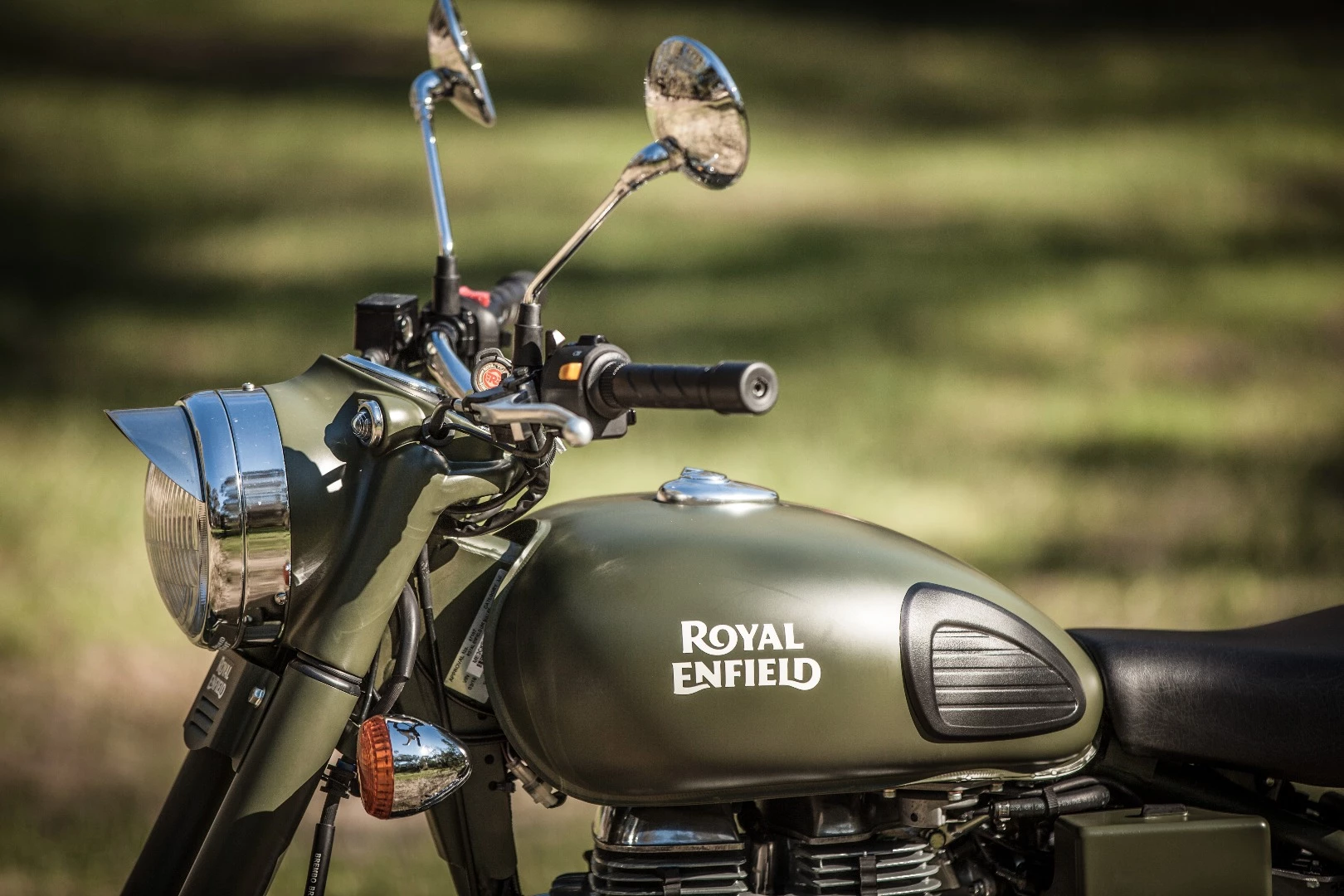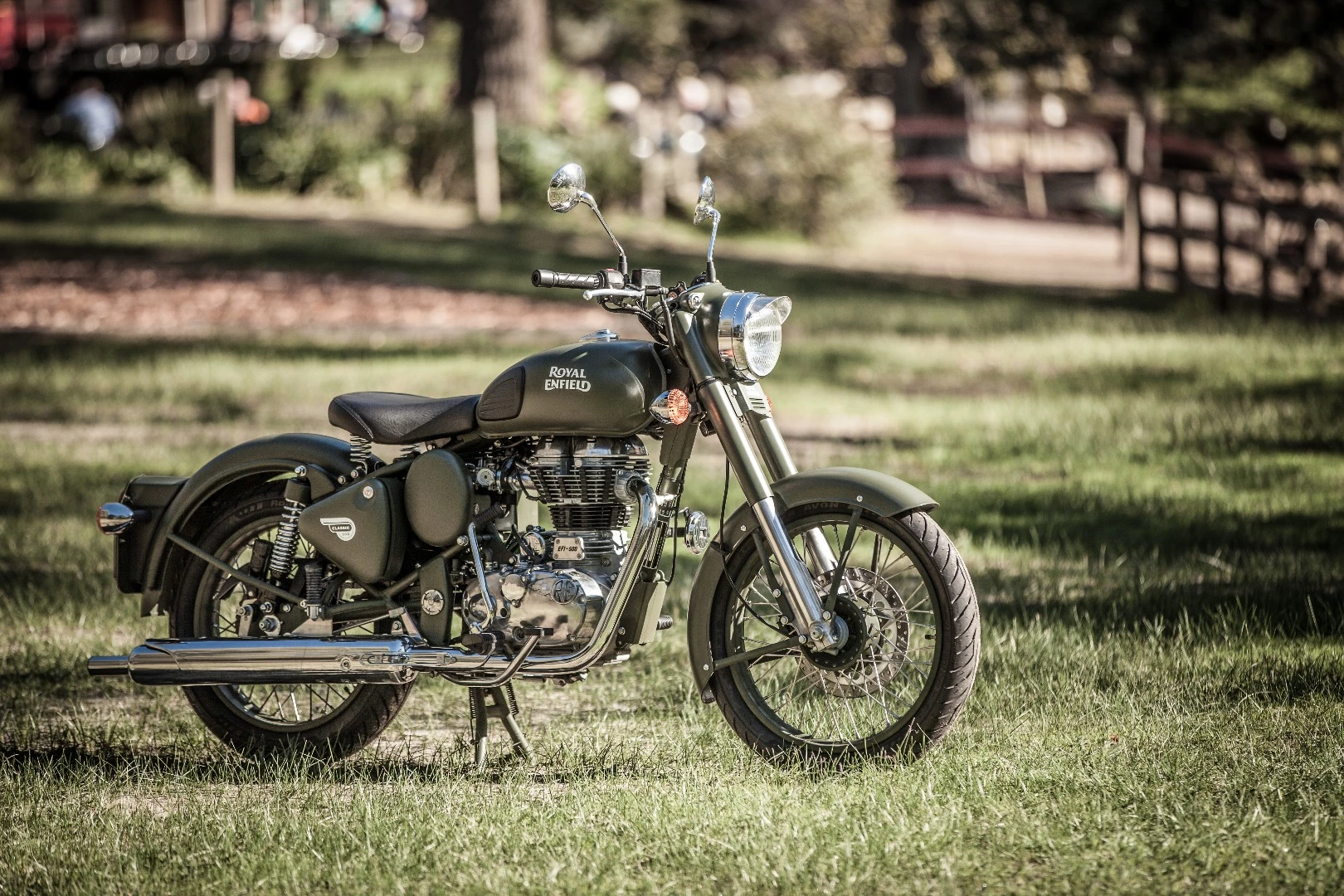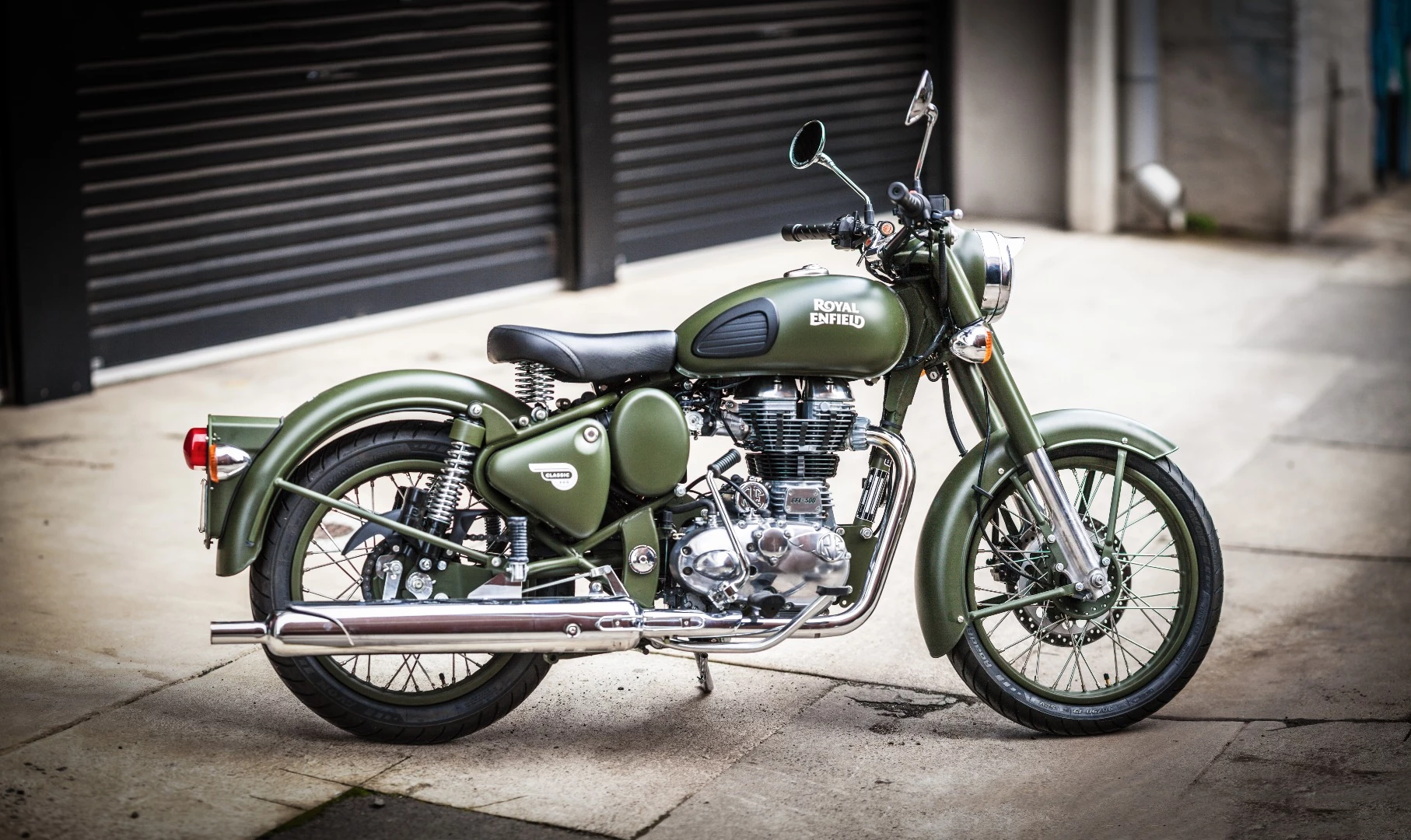When it comes to modern classic motoring, Royal Enfield occupies a pretty unique niche. To drive a brand new car with truly retro styling, you're paying through the nose for something like the Morgan AR Plus 4. On the other hand, you can pick up something like the Classic 500 motorcycle, in this case done up in army green as a homage to the motorcycles of World War 2, for about the same price as your average commuter bike. Like Morgan, Royal Enfield just never bothered to modernize, so it's about as authentic as it gets. And as Loz discovered riding it around for a couple of weeks, the vast majority of people on the street instantly assume it's a really well done restoration.
Royal Enfield's retro urban cruisers are currently out-selling Harley-Davidson worldwide. Part of that's because there's a billion people in India who grew up thinking the Bullet was the coolest bike in the universe, and they're something like five times cheaper than a Hog if you're buying in India.
Another part of it's the fact that they've been making bikes that looked almost exactly like this one for the better part of 70 years. If you're a fan of classic bikes, well, a 2016 Enfield really isn't drastically far off what people were buying in 1956, except with fuel injection, a disc brake and decent tires.
The fact that Enfield never really bothered to modernize has also clearly struck a chord with the man-bun brigade, who find these classic lines as authentic and meaningful as anything they've ever created in the medium of milk foam.
Personally, I've never been into classic bikes. I like 'em fast and naughty, and I don't give a chicken's cluck about looking cool, as should be apparent from my clothes, my grooming habits and my obvious inability to stay out of the lasagne tray.
But I also took a Bullet 500 through Western Mongolia for two weeks last year, and that was one of the most amazing trips of my life. So when I saw the familiar shape of that headlight surround, I'll admit it brought on some warm, fuzzy feelings that have proven hard to shake.
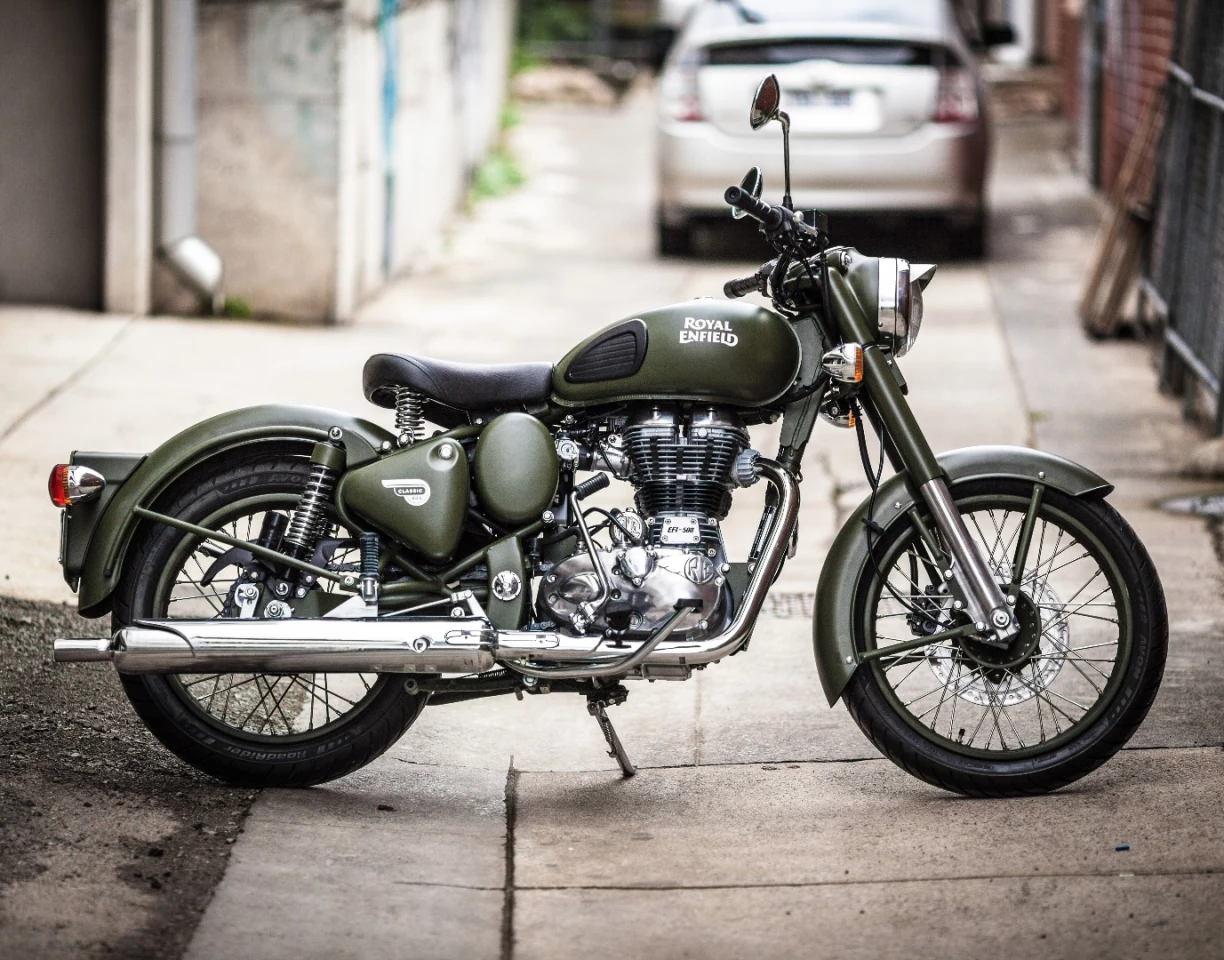
This is the Classic 500, a post-war tweak on the Bullet 500, which at this point appears to be the longest-running production motorcycle of all time. The donk's a 500cc air-cooled, fuel injected single, with a button start – thank god – and a kick start that's functional but unpleasant to use. I've heard rumours it was added back to the design as a bit of an afterthought, because people didn't like the idea of an Enfield without a kicker. It sure doesn't fire up anywhere near as easily as the carburetted Bullet I rode in Mongolia.
The paint job here is called Battle Green, and it's an obvious throwback to military bikes from the Second World War. Some 50,000 Royal Enfields actually saw active duty around the world in that time period, not to mention a bunch of old Harleys and Indians that looked kind of similar.

The dash, like the rest of the bike, gives you nothing but the basics. There's no fuel gauge, clock, trip meter or tacho, just a big ol' speedometer, an odo and some idiot lights. There's a couple of little side boxes that hold stuff like the fuse box, the air filter and the tool kit, but they offer basically no room for any extra storage. There's upside-down forks and a disc brake on the front. Actually, the forks are right way up with metal covers, but they sure look upside down. The back end's got a very placid, squishy drum brake on it and a pair of no-name twin shocks that haven't been painted gold like the Paioli ones on the Continental GT, and thus must be lower performance units.
Sitting directly over those shocks is another pair of springs that hold up the single saddle. That's twice as many springs as the Bullet gets, so it should be twice as comfy. And it is; at least, for most people. The riding position is upright and relaxed, and the seat is nicely supportive. Unfortunately for me though, it's not built for the larger gentleman. My porky butt felt like it was sliding off the back when I went to take off up a hill, or rode into a strong headwind on the freeway.
Which brings up another point – don't take your Enfield on the freeway. It can do 100, maybe 115 or 120 km/h (62, 71 or 75 mph) if you wring its neck, but it's a cruel thing to do to it. The engine vibrations, which throb along pleasantly at backstreet speeds, become frenzied at high revs. Your hands become numb within minutes, with your feet soon to follow, and you're acutely aware that every bolt on the bike is desperately trying to escape the grip of its loc-tite and rattle itself loose. Just don't do it.

Don't try to carve up corners on it, either. The suspension is loose and loungey, ground clearance is quite limited and the footpeg sliders deck out pretty quickly if you try to lean it over too far. That in itself is jolly sport on some bikes, but don't go pushing it on the Classic. The footpegs don't fold up out of the way, they're bolted directly to the frame, so within a few degrees of lean you go from dragging footpegs to lifting the rear wheel clean off the road. An interesting feeling and not one I was keen to repeat.
The limitations of this bike are immediately and abundantly clear. Complaining fondly about them and riding around them are an integral part of the Royal Enfield ownership experience, best as I can tell. Nobody in the last 20 years has bought an Enfield expecting it to outperform anything faster than a ride-on mower, and fans of the brand generally feel capable of dealing with the odd loose bolt, leaky petrol cap or misty gauge cover.
Personally, it forced me into a bit of an existential crisis, because I thought my passion for motorcycles was purely based on godlike road superiority and massive performance. And here I was, riding a 27-horsepower (20-kW) thumper with, well, basically no performance to speak of, and yet actively, undeniably enjoying the experience.
Saying "no performance" is probably unfair, the horsepower figures on these big low-revving singles distort the truth. With 41.3 Nm (30.5 lb-ft) of torque, there's enough grunt for the Classic to reliably see off the majority of cars at the lights. Mind you, if somebody really wants to have a go, your goose is cooked.
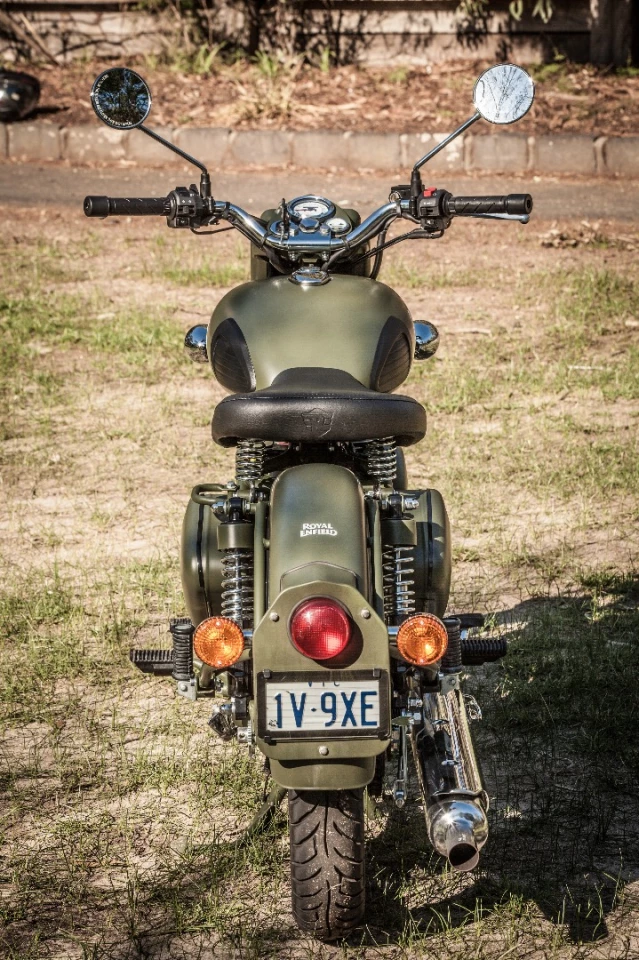
On the roll, the loose controls, the suspension, the thrumming vibrations and the vague feel from the gearbox all work together in concert to give this thing a feeling you just don't get from modern bikes. It keeps you on your toes – you never know when you're going to find yourself in a neutral you're not expecting, and with these thin tires and ordinary brakes, you've got to plan ahead in ways I haven't since I last rode a CT110.
It's fun – not exhilarating, death defying fun – but pleasant, enjoyable, dare I say sensible fun with a ton more full throttle than you ever get on a sportsbike. It's a reminder that there's more to motorcycling than sheer velocity, cornering lines and crazy lean angles. No, really, there is. Take all that stuff away, and two wheels and a motor is still a joyful way to get around. I guess it had to be, for people to fall in love with bikes more than 100 years ago.
The Enfield is also very compelling to look at, attracting a wide variety of onlookers wherever you go, most of whom (it's fair to assume) think you've lovingly restored some 50-year-old banger into pristine condition. That's certainly what I told anyone that looked interested, and nobody ever challenged me on it. I'd then tell them I'd been yanking their chain and it's a 2016 model, and rather than being shitty with me or thinking the idea cheap or tawdry, they seemed to think it was even cooler.
So yes, it charmed me. And it charmed my mate Brownyy, who is the 2012 British National Natural Beard, Styled Moustache champion, and who goes everywhere at a billion miles an hour and who had never ridden anything like it. And it charmed my mate Kenny, who's another fast guy on the open road that I wouldn't have expected would have any time for a slow, cruisy, humble retro bike.

I wish my Pop was alive to see it. I've seen photos of the old 40s-era Harley WLA he tried to court my Nanna on until she told him to bugger off and get a car because she wasn't going to flounce about on the back of some fellow's motorbike. It was painted army green, with a sprung seat, and there's nothing on the market that looks more like it than the Enfield Classic 500 in Battle Green.
Of course, it probably cost him three pound sixpence, where the Enfield is a lofty AU$8,790 in today's Australia (US$5,695 in America, or just US$2,800 if you buy one in India - mind you, the domestic model Enfield is a vastly different beast from the export model, and a hefty step down in quality on everything from wheels to tires to handlebars). Pop would probably say "bugger it, I'll make one myself for that much," and set about dismantling a lawnmower. But not everyone's got those kind of skills, or that kind of time, and there are plenty of people who'd love to be seen on Instagram astride something this nice.
The Classic is available in a 350cc version for folk that want even less performance (19.8 hp/15 kW, 28 Nm/21 lb-ft). It comes in black, silver and tan colours with some nice detailing and pinstriping about them, as well as Battle Green like this one, another more mustardy variant called Desert Storm, a chrome one, and an odd matt "Squadron Blue." My preferences would probably run toward the silver – but then, my preferences would also run toward something with about six times the horsepower too, so I can't be trusted on these things.
There's already an undercurrent of modern western city riders who long for the simplicity and charisma of these old-school classic style bikes. But someday soon, the performance bike world will be absolutely, utterly dominated by smooth, quiet, maintenance-free and uber-powerful electric motorcycles. And I reckon when that happens, even more people will run to the welcoming arms of Royal Enfield in search of something that feels a bit more alive – warts and all.
Check out our video review of the bike below.
Product page: Royal Enfield

